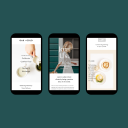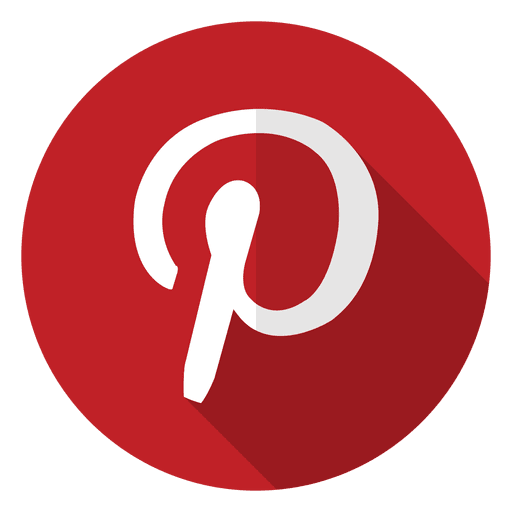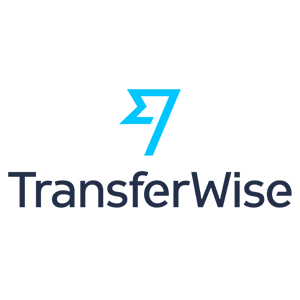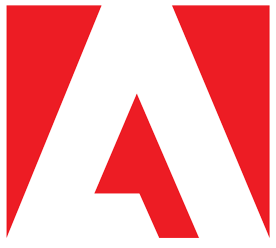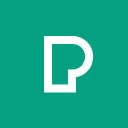My Independent Print Magazine Makes $114K
I’m Caroline Rowland, the founding editor of 91 Magazine. The magazine is a biannual print publication that focuses on creative interiors and lifestyle while championing small independent businesses. As well as the print magazine, we have an award-winning blog and a quarterly ezine that goes to our mailing list subscribers, inspiring throughout the year. We also host online workshops for creative business owners.
The magazine has grown from what was initially a free-to-read online publication to a print magazine that is stocked in independent stores around the world. Our readership varies as it depends on what our print run is on each issue, but it is usually 3000+ and the website receives over 27K page views a month. I was also shortlisted for Homes & Interiors Editor of the Year at the BSME (British Society of Magazine Editors) awards last year which was a huge honor. I found out last week that I have been shortlisted again this year which is wonderful news!

What's your backstory and how did you come up with the idea?
I grew up in a small village in Northern Ireland and after school, I went to art college and had dreams of being a fashion photographer. After a year of studying fashion photography in London, I realized it wasn’t for me so changed my degree and studied Photographic Arts. At the end of my degree, I realized my passion was in photography AND publishing, so I began working in London, first for Getty Images and then for the Financial Times as a photo editor.
While my job was creative on some level, I still craved more creativity and started an interiors blog in 2007 and also ran an online shop selling vintage homewares for a couple of years. I was constantly buying interiors magazines, but I started to realize the mainstream titles weren’t exciting me anymore, and I started to wonder about creating my own.
While doing everything yourself as a start-up saves money, it’s generally advantageous in the long run to outsource the tasks that you aren’t so skilled at.
I’d learned loads about publishing during my time at the FT, so I decided to attempt creating an online magazine. I had noticed a few online magazines coming out of the States and Australia, but there were no UK-based ones, so I thought I’d give it a try. I had built a bit of a creative network through my blog and shop, so I had others interested in contributing and even managed to secure a small amount of advertising revenue for the first issue. I soon realized that this was what I was passionate about and could see it growing much more than my online shop, so I closed that shortly after launching the magazine.
Take us through the process of designing the magazine.
The magazine existed solely online for three years, I then took a year’s break when I had my daughter, and then in 2016, I came back to it and decided it was time to ramp things up and get the magazine into print. At this point, I decided to get a team together and employ the skills of others rather than rely on my sketchy design and subbing skills.
If you disappear and don’t keep in touch with your audience regularly they will forget about you, they will move on and find something new. Keep showing up.
Each magazine starts with ideas - the team brainstorms around a theme and then we come up with a ‘dream’ lineup for the features. We then start contacting people we would like to feature and commissioning writers, photographers, and illustrators.
Once the words and images start to come in, the copy and images are edited, and then they go to my designer for layout. While she is working on those, me and my advertising manager are simultaneously working on filling the ad slots in the magazine as well as securing online sponsored content, usually with small independent brands who we feel are in line with the magazine and our ethos.
I am constantly reviewing layouts during the process, but then once they are complete, I go through with a fine-tooth comb, making edits, changing images, etc. Finally, we prepare the file for the printers and it goes off to them. To finance the print run, I take pre-orders and subscriptions for the issue, so once it arrives, I have a lot of packing to do! I still send out website orders myself as it keeps costs down, but I do use a distributor for getting the magazines to our stockists across the UK and the world. Our stockists' network has grown over the years, both through contacts our distributor has, retailers approaching us directly and sometimes we contact stores we’d like to see the magazine in. It sits particularly well in independent home and lifestyle stores where the products they sell reflect the type of content we feature.
In between the production of the magazine itself, I am also having to keep on top of our twice-weekly blog content and the production of the quarterly e-zine. This is done with the help of my editorial team and a wide network of contributors. Having a large and supportive creative community around the magazine is what has made it work - I could never have done it all single-handedly.


Describe the process of launching the business.
I feel like my business almost had two launches - the initial one when the magazine was online and then 5 years later when it launched as a print magazine. At first, I guess I wasn’t taking it seriously as a business, it was more of an add-on to my existing blog and shop, but the benefit of that was that I already had a readership and a customer base who welcomed it.
In the beginning, I published the online magazine on issuu.com and had a very basic website - this made it very low cost, but as it was also free to read, the only revenue was a small number of ad sales. When I relaunched as a print magazine in 2016, I had much more of a strategy, completely rebranding, creating a new website and blog, and enlisting a small team.
By this point, printers had realized the importance of working with independent magazines and were now able to offer small print runs which were previously hard to find. To fund the first print run (and we still do it this way) the magazine went on pre-order ahead of publication, supplemented by ad sales. I have never had any kind of loan to fund the business.
As the magazine had gained a following from initially being online, we were able to build on that audience and social media was a useful way to spread the word, especially as loyal readers kindly shared their images and words about the magazine.
One thing I’ve learned from launching a business is to always do as much research in advance before diving in. Compare suppliers and pricing as much as possible and get recommendations where you can.

Since launch, what has worked to attract and retain customers?
I think producing a great quality product that will resonate with a niche community is the first step. But once you’ve got that I’ve found being authentic, relatable, and open with your customers (existing or potential) is essential. Not only from a marketing perspective, but for your enjoyment of your business. Showing personality and passion for what you do through your social media content as well as being consistent with your brand.
I have tried running ads on social media before, but have never found them particularly successful. We find reader recommendation is much more beneficial and we encourage readers to share images of the magazine using our hashtag #my91magazine.
Selling through retailers is also a great way to expand your audience as people who may never have discovered you online, may find you in their favorite store. Building a strong email marketing list is incredibly valuable, and offering an incentive to sign up is advisable. Our quarterly ezine is a mini version of the main magazine and our mailing list subscribers receive this for free, this has helped to grow our list to over 10K.
I don’t tend to offer discounts often as I don’t want to diminish the value of my product. Instead, I offer subscriptions and bundles, otherwise, I think people avoid buying your product at full price as they wait until you reduce the price or offer discounts. Price your product fairly in the first place and people will respect that.


How are you doing today and what does the future look like?
Today the magazine makes a small profit and I now work full time on the business. The business is constantly evolving and especially over the past couple of years with Covid and Brexit there have certainly been challenges. My income streams come from direct sales through my website, sales via retailers, advertising sales, and ticket sales on our online workshops. These have fluctuated over the pandemic due to things like stores being closed for long periods, but this then boosted our direct website sales. As we head into 2022 I am hoping for things to settle, and I am keen to grow our distribution, particularly outside of the UK.
I haven’t invested a lot in advertising and combined with my costs for email marketing and software like Tailwind, the past year costs have been around £600. My experience so far of social media advertising has not been that successful, so I am focussing my efforts on building my community and customer base organically and through customer-generated content. Our average monthly page views are around 27,000, and our mailing list has grown to over 10.5K subscribers and our Instagram has over 43.7K followers. Our Pinterest page is currently receiving around 4.7M monthly views.
Currently, our direct website sales are usually slightly more than our sales through retailers, and the direct sales mean my margin is bigger on those sales. But of course, retailer sales have the potential to reach new readers.
After publishing 13 print issues, we are very much in a rhythm of how things operate, but I am always looking for ways to improve and freshen things up. New ways to work with advertisers, new ways to sell the magazine, such as online wholesalers, and new ways to offer our products, such as gift boxes we have just launched for Christmas 2021.
My business is small, but I believe, perfectly formed. It suits my current lifestyle - being a mother - as it means I can work from home around my daughter’s schooling. Short term I plan to continue growing the brand organically but perhaps when my daughter is older I will consider expanding into more special editions and perhaps books. I’ve also considered the idea of publishing another magazine if time and money allows.
Through starting the business, have you learned anything particularly helpful or advantageous?
I’ve certainly learned to think things through more thoroughly before jumping in. Taking time to plan rather than doing things on a whim. I do believe it is worth trying things out (with caution) - for example, I have tried selling the magazine through a large high street retailer, but have since realized the listing fees, low margins and the lack of personal relationship with them meant they weren’t right for me and my product. I was initially excited to be stocked in a big name store but soon realized our business values were not aligned and this is so important. I now prefer to have a wider network of smaller stores that have a similar ethos stocking the magazine.
I’ve also learned that while doing everything yourself as a start-up saves money, it’s generally advantageous in the long run to outsource the tasks that you aren’t so skilled at. For the majority of businesses strong branding and great imagery are essential, so working with a designer and photographer will be beneficial for example.
Finally, schedule everything! Not just meetings - tasks, blog posts, email marketing, seasonal events - there is always so much to do, and keeping organized will help things to go much more smoothly on the day-to-day.

What platform/tools do you use for your business?
Adobe Creative Cloud is essential for magazine publishing, with InDesign, Photoshop, Lightroom, Acrobat, and Spark being the main applications we use. My website is hosted on Squarespace which I love for ease of use and good design.
Our main platform for engaging with customers is Instagram, and I use Flodesk for my email marketing. Flodesk is affordable but offers a great design for your emails. I use Tailwind for scheduling pins on Pinterest which is great for consistently pinning on Pinterest.
I use Google Analytics and have recently started using Google Merchant to try and get more visibility through Google.
I use a traditional magazine distributor but I am currently looking into increasing wholesale through the Faire platform which I hope might open up distribution further outside of the UK.
What have been the most influential books, podcasts, or other resources?
Specifically for magazine publishing, So you want to publish a magazine? By Angharad Lewis is great. How to Style your Brand by Fiona Humberstone is useful if you don’t know where to start with your branding.
I enjoy listening to Conversations of Inspiration podcast, hearing the stories of successful small business owners, some of which have grown into well-known brands.
The Resilient Retail Game Plan is great for retail focussed topics. I also regularly visit Bristol-based marketing & branding agency Studio Cotton’s blog and Instagram as they share loads of useful knowledge around marketing, SEO, branding, etc in a fun, accessible way.
Advice for other entrepreneurs who want to get started or are just starting out?
Try to be consistent in what you do. Keep your branding and your message consistent, be consistent in how often you blog or send marketing emails, and be consistent on how visible you are. If you disappear and don’t keep in touch with your audience regularly they will forget about you, they will move on and find something new. Keep showing up.
Invest in the areas which you know will elevate your business- perhaps that is top-notch photography, or maybe an excellent web or app developer, don’t scrimp on the things that make your brand great.
But, at the same time try to avoid getting yourself into too much debt. Test the market with your idea initially to see if it is likely to take flight.
Finally, build a community around your brand, be open, authentic, and personable. I believe that people are moving away from big corporate brands and looking for a more personal touch, particularly when it comes to retail. Treat your customers like friends and they will be with you on your journey for many years to come.
Where can we go to learn more?
If you have any questions or comments, drop a comment below!

Download the report and join our email newsletter packed with business ideas and money-making opportunities, backed by real-life case studies.

Download the report and join our email newsletter packed with business ideas and money-making opportunities, backed by real-life case studies.

Download the report and join our email newsletter packed with business ideas and money-making opportunities, backed by real-life case studies.

Download the report and join our email newsletter packed with business ideas and money-making opportunities, backed by real-life case studies.

Download the report and join our email newsletter packed with business ideas and money-making opportunities, backed by real-life case studies.

Download the report and join our email newsletter packed with business ideas and money-making opportunities, backed by real-life case studies.

Download the report and join our email newsletter packed with business ideas and money-making opportunities, backed by real-life case studies.

Download the report and join our email newsletter packed with business ideas and money-making opportunities, backed by real-life case studies.


